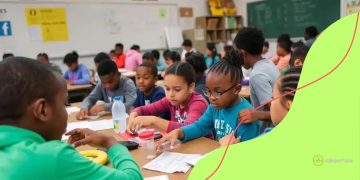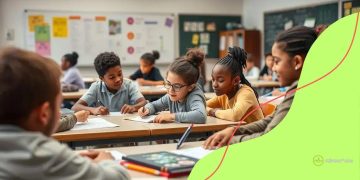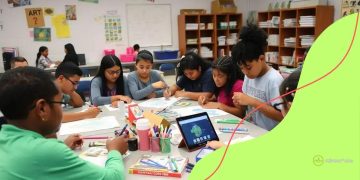Exploring alternative education models for innovative learning
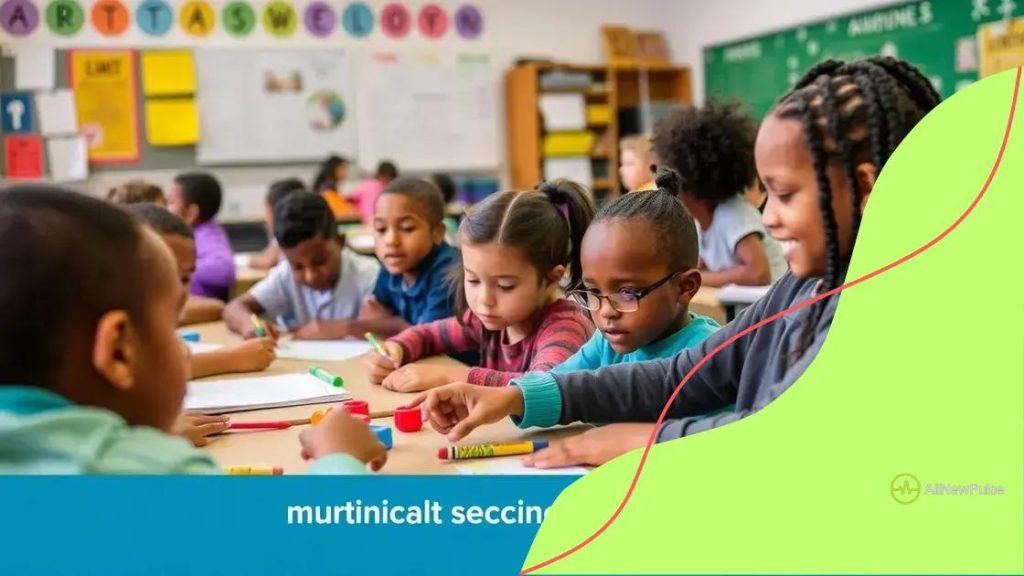
Exploring alternative education models offers personalized learning experiences that cater to individual student needs and strengths, fostering creativity, critical thinking, and collaboration in supportive environments.
Exploring alternative education models invites us to rethink traditional notions of learning. Have you ever considered how different educational paths might spark creativity in students? Let’s dive into exciting options that could reshape education as we know it.
Understanding alternative education approaches
With the rise of innovative learning environments, understanding alternative education approaches is essential for parents, educators, and students alike. These methods often provide unique paths that cater to diverse learning styles and needs.
There are multiple approaches to alternative education that focus on holistic learning. The Montessori Method is one of the most recognized, emphasizing self-directed activity. In this environment, children learn at their own pace in a hands-on manner.
Key Features of the Montessori Method
- Child-centered learning
- Emphasis on collaboration
- Hands-on activities
- Flexible classroom design
This model promotes independence and creativity, allowing students to explore their interests deeply. Another popular approach is the Waldorf Education, which integrates arts and academics through a structured curriculum. This method emphasizes imagination and creativity, appealing to many families.
Benefits of Waldorf Education
- Focus on creativity and the arts
- Strong community involvement
- Integrated curriculum across subjects
By incorporating these elements, students experience a richer learning environment that aligns with their passions. Unschooling is another alternative approach that may resonate with parents seeking flexibility. This method allows children to dictate their learning journey, following their interests instead of a standardized curriculum.
Advantages of Unschooling
- Promotes self-directed learning
- Encourages real-world experiences
- Fosters a deep engagement with interests
In this way, students acquire knowledge through life experiences and interactions rather than traditional classroom settings. Each of these alternative education approaches demonstrates that there isn’t just one way to learn. Flexibility and creativity are key.
Benefits of alternative education models
Exploring the benefits of alternative education models reveals why many families are choosing these paths for their children. These models often cater to unique learning styles and foster creativity.
One clear advantage is the personalized learning approach. In many alternative education settings, teachers tailor their methods to fit individual students. This attention leads to a deeper understanding of subjects and boosts student engagement.
Key Benefits of Personalized Learning
- Addresses specific learning needs
- Encourages student motivation
- Promotes a love for learning
Another significant advantage of alternative education models is the focus on critical thinking skills. Unlike traditional systems, which often emphasize rote memorization, these approaches encourage students to analyze, question, and create.
Enhancing Critical Thinking
- Encourages exploration of various viewpoints
- Develops problem-solving abilities
- Fosters independent thinking
This emphasis on critical thinking prepares students for real-world challenges, making them more resilient and adaptable. Furthermore, many alternative schools emphasize social skills through collaborative learning environments. These settings create opportunities for teamwork and effective communication.
Community and collaboration are central to many alternative education models. Students often work in groups, which enhances their ability to connect with others. This experience prepares them for both personal and professional relationships later in life.
Strengthening Social Skills
- Improves communication abilities
- Encourages empathy and understanding
- Builds teamwork skills
Ultimately, alternative education models provide numerous benefits that traditional systems may lack. These approaches can lead to well-rounded individuals capable of thriving in diverse environments.
How to choose the right model for your needs
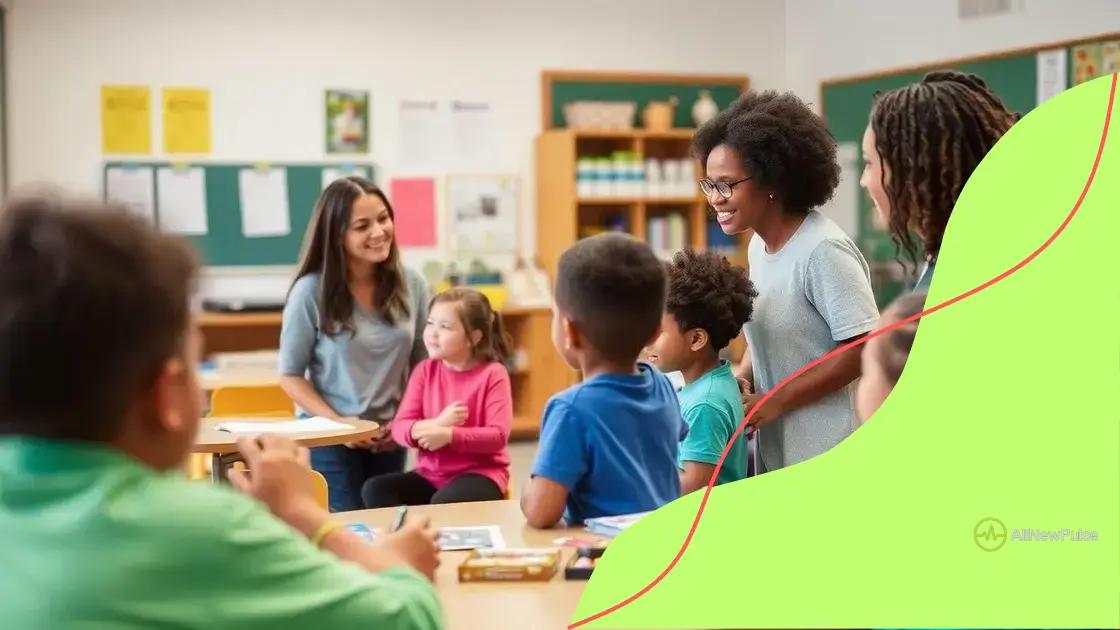
Choosing the right alternative education model for your needs can seem overwhelming. However, understanding your child’s learning style and requirements is a great starting point.
One effective approach is to assess their interests and strengths. For instance, if your child enjoys hands-on activities, a model like Montessori could be ideal. This method emphasizes experiential learning, allowing children to explore subjects actively.
Factors to Consider When Choosing a Model
- Child’s learning style
- Preferred subjects and activities
- Social interaction needs
- Flexibility and structure preferences
Next, researching different programs and schools in your area can provide valuable insights. Many schools offer open houses or trial classes, giving you and your child an opportunity to experience the environment firsthand. Interacting with teachers and discussing curriculum choices can also help you gauge whether a school aligns with your values.
Researching Educational Programs
- Visit local schools and programs
- Attend informational meetings
- Talk to other parents
Additionally, consider your family’s values and educational goals. Do you prioritize creativity, independence, or a more structured approach? Identifying these values will help narrow down potential models. For example, if you value creative expression, schools focusing on the arts, like Waldorf, may be a better fit.
Lastly, keeping an open mind during this process is crucial. A model that seems perfect initially may not work as expected, and being flexible allows for adjustments. Remember, the goal is to find a supportive learning environment that meets your child’s needs and helps them thrive.
Real-life success stories in alternative education
Real-life success stories in alternative education highlight how different approaches can lead to remarkable outcomes for students. These narratives often showcase how tailored learning environments can transform lives.
One inspiring story is of a young girl who struggled in traditional school settings. She felt overwhelmed and lost, but she thrived after switching to a Montessori program. This environment allowed her to explore her interests at her own pace. Today, she excels in art and science, demonstrating the power of personalized education.
Success Story Highlights
- A student who found confidence through hands-on learning
- Another who embraced creative expression in a Waldorf school
- A teenager who discovered a passion for coding through an unschooling model
These examples show how alternative education models cater to the individual needs of students, allowing them to shine. Similarly, a boy in a project-based learning program developed strong teamwork skills by collaborating with peers on community projects. He not only learned valuable academic content but also gained life skills that will serve him well in the future.
Key Factors Contributing to Success
- Individualized learning paths
- Supportive community environments
- Opportunities for hands-on experiences
Such programs focus on the whole child, nurturing their interests and strengths. For instance, a young man who struggled with anxiety flourished in an alternative setting that prioritized mental health alongside academics. He learned to manage his feelings and embrace learning in a supportive environment.
These real-life stories remind us of the potential within every child. Alternative education offers pathways to discover talents and address challenges, proving that a different approach can lead to profound success.
Challenges faced by alternative education systems
Alternative education systems offer unique approaches to learning, but they also face several challenges. Understanding these obstacles is crucial for families considering these options.
One significant challenge is funding. Many alternative schools rely on grants, donations, or tuition from families. This can lead to disparities in resources between different programs. Some schools may lack the facilities or materials needed to provide a comprehensive education.
Common Funding Issues
- Insufficient financial support from local governments
- High dependency on tuition fees
- Variability in available resources
Another challenge is the regulatory environment. Rules and requirements for alternative schools can vary widely by state or region. Some educators may struggle to meet these standards while maintaining their unique teaching philosophies.
Regulatory Barriers
- Inconsistent regulations across states
- Pressure to adhere to standardized testing
- Difficulty in certification and accreditation
Additionally, there is often a perception issue surrounding alternative education. Some families may hesitate to enroll their children due to stereotypes about non-traditional schools. This negative perception can affect enrollment numbers and the overall credibility of these programs.
Lastly, staffing can be a challenge. Attracting and retaining qualified teachers who are passionate about alternative methods can be difficult. These educators often require a unique skill set not always found in traditional training programs.
Staffing Challenges
- Need for specialized training
- Higher turnover rates compared to traditional schools
- Difficulty in attracting qualified applicants
Despite these challenges, many alternative education systems continue to thrive and adapt. Addressing these obstacles helps create robust programs that can effectively meet the needs of diverse learners.
FAQ – Frequently Asked Questions about Alternative Education
What are alternative education models?
Alternative education models are educational systems that differ from traditional approaches, focusing on personalized learning, creativity, and social skills.
What challenges do alternative education systems face?
They face challenges such as funding issues, regulatory hurdles, negative perceptions, and staffing shortages.
How can I choose the right alternative education model for my child?
Assess your child’s learning style, interests, and values, and research local programs to find the best fit.
What are the benefits of alternative education?
Benefits include tailored learning experiences, increased engagement, and a supportive community that fosters creativity and critical thinking.
